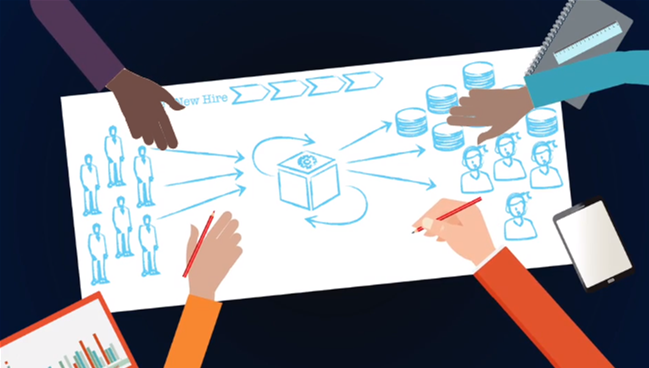
App Studio
App Studio provides core features for application development, such as case design, data management, and user experience. App Studio is designed for low-code users. Typical users include application developers, front-end developers, data engineers, and business analysts. You can use App Studio to get your applications operating quickly.
App Studio helps you visualize the key factors of the desired business process. As you outline the process, you can draft relationships between stages of the process, participating personas, communication channels, and data required for process resolution. This draft serves as a development plan, which helps you manage your development team's workload.
Check your knowledge with the following interaction:
Support for agile development
App Studio supports and incorporates agile development best practices to help you plan and implement the capabilities for your application.
In App Studio, users can quickly build from a business case by developing a working outline of the process to be performed in a Pega Platform™ application. The Application Profile captures and presents user stories, bugs, and feedback items, which eases collaboration across technical and business members of the team. For example, you can create a feature to support requests for new training modules in your application. Your team can then map development tasks, such as defining a data table of available courses, to this feature by creating stories, bugs, and other work items. Features support traceability from objectives to development tasks to implementation, keeping all collaborators informed.
App Studio also supports real-time UI design as you process work. For example, a team that is testing the end-user interface of an online shopping application can add new fields and make changes to controls. This ability is helpful for reviews with stakeholders, who can see feedback implemented in real time.
Modular application design
Pega Platform applications are made up of instructions, called rules, that govern application behavior just as the rules of chess govern the behavior of various pieces. The rules that make up an application are organized into various layers, which are modules that can be reused between applications. The App Studio overview displays an Application Layers widget, which provides a visual representation of the rules that make up the application. Hovering your pointer over a layer title or graphic highlights the rules that the layer contributed to the application.
Caution: The Application Layers widget presents only a high-level summary of the contents of your application layers. For this reason, the data provided by the widget should not be considered a definitive inventory of your application.
In the following image, click the + icons to learn more about the various layers of a Pega Platform application.
Each layer is a unique application and is built on one or more layers, except for the Pega Platform layer. This modular approach to application design allows the reuse of common rules to reduce development time and improve application quality and maintenance, even for complex applications. Each layer can be maintained by a dedicated development team and updated on its own schedule based on agile development practices.
This Topic is available in the following Module:
If you are having problems with your training, please review the Pega Academy Support FAQs.
Want to help us improve this content?
